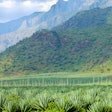The annual change in planted areas for cotton, corn/soybeans and oats in the U.S. correlate with the change in croplands for biofuel production, but only cotton seems to be negatively affected, calling into question the theory that biofuel production in the U.S. has induced indirect land use change.
A new study, “Indirect land use change for biofuels: Testing predictions and improving analytical methodologies,” compiled historical data from 2002 to 2007 to take a look at the potential correlation between U.S. biofuel production and indirect land use change. The study found that “no arable land increases from the 1990s are observed in the U.S. Furthermore, no declines in natural ecosystem lands in the U.S. have been observed since 1998. Therefore, the U.S. historical data do not indicate that [indirect land use change] occurred within the 48 contiguous states as a result of U.S. biofuel production.”
However, said study preparers Seungdo Kim and Bruce Dale of Michigan State University, the results can be interpreted two different ways: either biofuel production in the U.S. through the end of 2007 has not induced indirect land use change, or the test simply failed to detect ongoing indirect land use change from the historical data. The study suggests that more research be done, both with data after 2007 (which is not yet available) and with more sophisticated empirical approaches that might more accurately make use of the historical data.


















